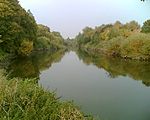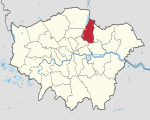Leyton Jubilee Park
Garden stubsLeytonLondon geography stubsParks and open spaces in the London Borough of Waltham Forest

Leyton Jubilee Park is a park in Leyton, London, and the largest park managed by Waltham Forest Borough Council. It was formed out of the merger of two green spaces, Ive Farm and Marsh Lane Playing Fields in August 2012.The park's ecology includes scrub woodland, meadow, wildflowers and mature trees including poplars and london planes. Dagenham Brook is a river running along the eastern boundary of the park which is populated by such birds as kingfishers and little egrets.The park's features include picnic, recreation and seating areas, playgrounds, an outdoor gym and a community cafe.
Excerpt from the Wikipedia article Leyton Jubilee Park (License: CC BY-SA 3.0, Authors, Images).Leyton Jubilee Park
Marsh Lane, London Leyton (London Borough of Waltham Forest)
Geographical coordinates (GPS) Address Nearby Places Show on map
Geographical coordinates (GPS)
| Latitude | Longitude |
|---|---|
| N 51.563 ° | E -0.024 ° |
Address
Marsh Lane
E10 7BL London, Leyton (London Borough of Waltham Forest)
England, United Kingdom
Open on Google Maps







